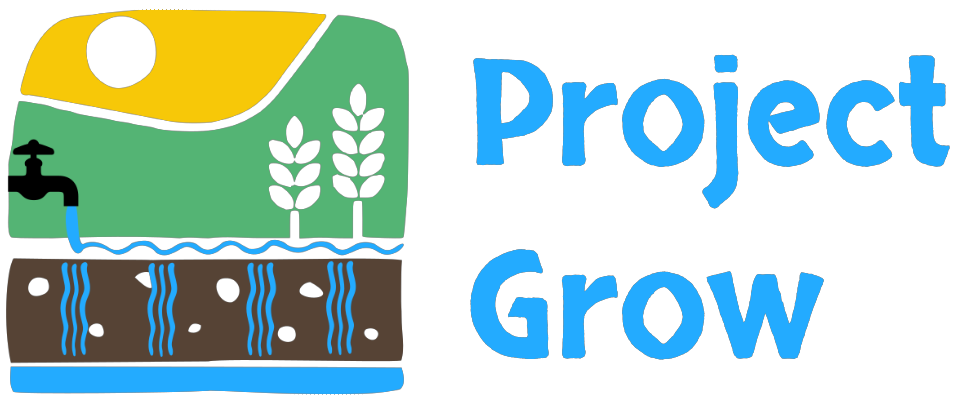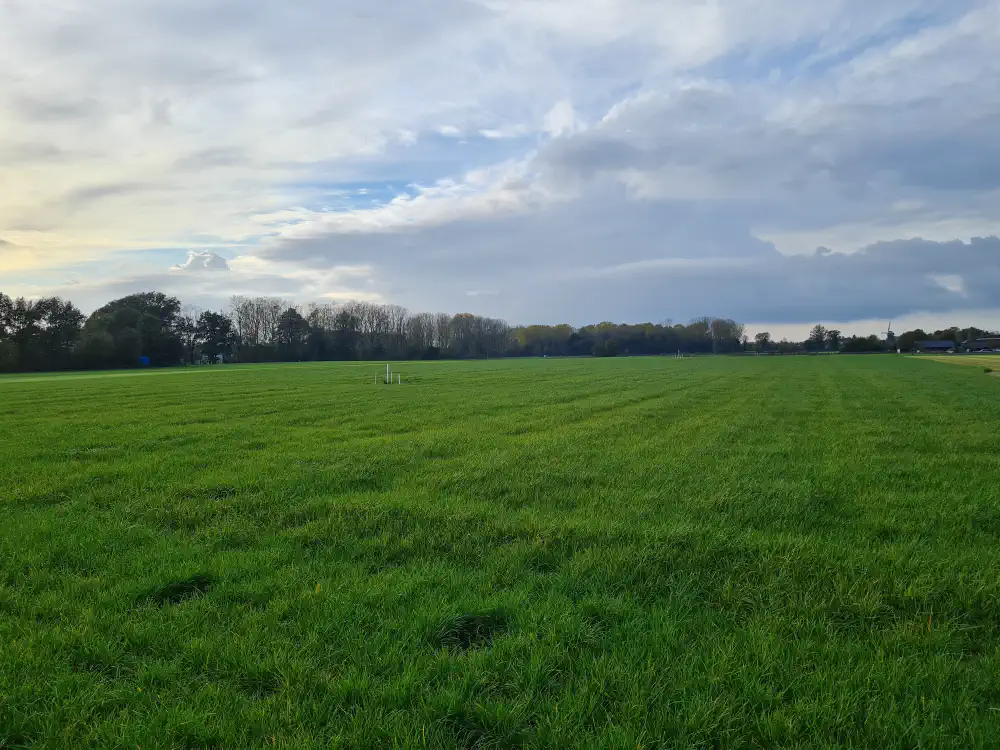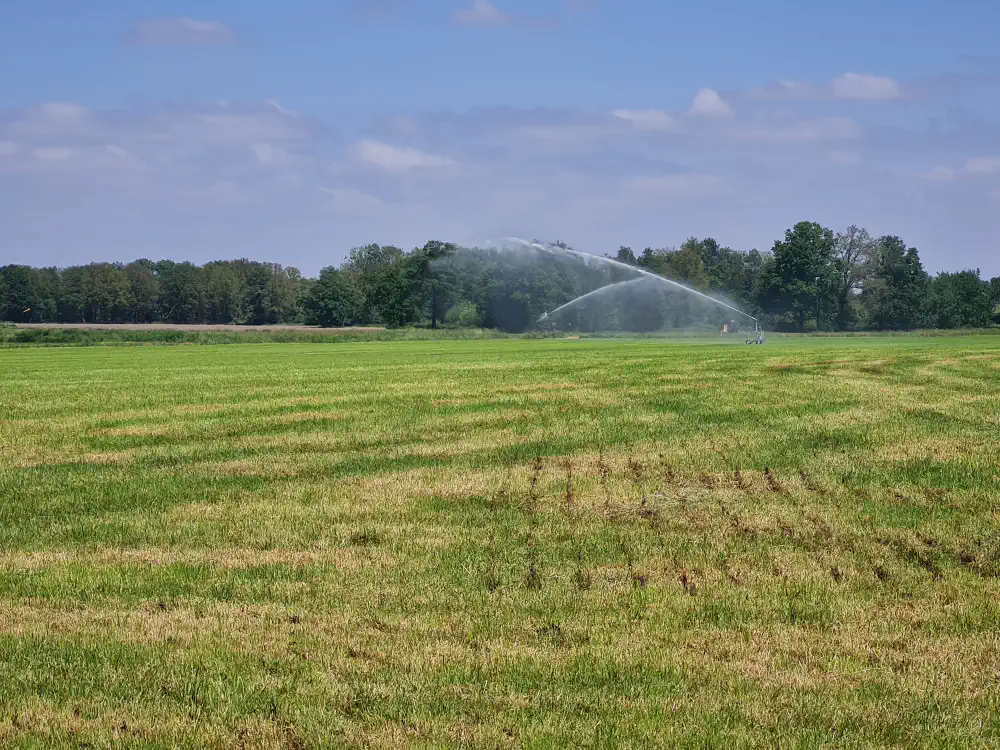Experimental subirrigation site
In our experiment pilot site in Kinrooi (east of Flanders), we installed a subirrigation system consisting a of network of pipes directly connected to the adjacent domestic wastewater treatment plant. Subirrigation is a method of watering crops from below the soil surface, close to the plants root zone. Before we began subirrigation in April 2022, all treated wastewater was discharged to the nearby Abeek river, swiftly flowing to the sea. Now, a portion of that water is routed through two large buffer tanks and supplied at a controlled rate into the subirrigation system. As the water infiltrates the ground, some of it is directly used by the crops and some percolates to the water table.
Impacts on water groundwater quantity and quality are closely monitored in a network of over 20 piezometer on and around the field.


